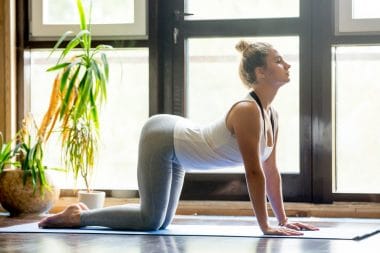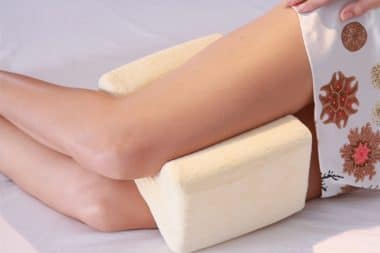Humans weren’t meant to sit for extended periods of time — we were meant to squat.
As a resting position, squatting is significantly healthier than sitting in a chair. Squatting burns up to 70 percent more calories, and sitting down can result in a stiff, painful spine and limited mobility.
Any time you can squat instead of sit, I encourage you to do so. But I also realize that squatting at the office might raise some eyebrows. Especially if you spend most of your day sitting, adding squats into your workout routine can improve your mobility, energy levels, and overall health.
Â
All Squats Aren’t Created Equal
If your mobility has been compromised by your sitting posture, squatting is a great way to regain it. But contrary to popular belief, partial squats aren’t a smart way to start.
Full, deep squats don’t just help you gain more muscle mass than partial squats do, as reported by the European Journal of Applied Physiology; they’re actually safer, too. A 2013 study published in Sports Medicine found that the greatest compressive forces are placed on the knee when it’s bent to a 90-degree angle — in other words, a partial squat.
When you squat deeply — when there’s contact between the back of your thigh and your calf — the fuller range of motion builds muscle and tissue around your knees. Squatting deeply spreads stress over a greater area of cartilage, which not only increases knee stability, but also reduces your risk of injury.
Â
Better, Safer Squats
As with any workout, making the most of your squats begins with proper form. Follow these three best practices for fuller, safer squats:
- Do deep squats with light weights.
You’ve probably seen squatters in gyms go straight for the 300-pound dumbbells. Resist this impulse. Excessive point-loading on the kneecap during a heavy-weighted, short-arc squat can damage the knee’s cartilage.Instead, opt for a deep squat with weights you can handle. Light weights keep pressure on the patellar cartilage within the normal range, while deep squatting prevents dangerous localization of stress. What’s more, your muscles benefit more from lengthening and shortening during deep squats than during shallow ones.
Â
- Invest in supportive shoes.
Squatting in an old pair of shoes is like taking a car with worn-out tires to the race track. Most “fitness” shoes simply don’t offer the support you’ll need to perform deep squats safely. As you squat, your body weight and the additional light weights can cause your feet to pronate, or turn inward, and your knees will naturally follow.To avoid exposing your knees and surrounding ligaments to excessive pronation, wear shoes that offer stiff arch support and longitudinal stability. Also, be sure their heel cup is deep enough to prevent your feet from swaying from side to side, which can exert even more force on your knees’ ligaments.
- Practice correct form.
Squatting simply means bending your legs while keeping your back straight. But it’s not just the legs and back that are affected by squats. Incorrect form can lead to excessive strain on your neck, hips, spinal discs, and knees. Done repeatedly, poor squats can lead to joint degeneration, swelling, and even permanent damage.For example, one of the more frequent mistakes I see is the valgus knee movement, which is when the knee rotates inward during the bending phase of a squat. Unfortunately, this accentuates a weakness in the thigh’s musculature that can result in season-ending knee injuries.You can find plenty of videos online in which professionals demonstrate proper squatting techniques, but I’ve laid out a few best practices below.
Squatting the Smart Way
Before squatting, warm up by stretching your core and leg muscles. This allows for synchronized, smooth engagement of these muscles during your exercise, preventing potential joint and muscle injury.
For beginners, I suggest starting with a cross-training program with limited focus on squatting and greater emphasis on core conditioning. Strength in the core muscle groups promotes good form and protects your lower back, hip, and knee joints, especially if you squat daily.
When you get to the squatting part of your routine, stand with your feet about hip distance apart, feet facing forward and back straight. If you use weights, select one you can comfortably hold near your chest. Slowly lower your rear end until the backs of your thighs gently touch the backs of your calves. Take care to not let your knees or ankles turn inward, and keep your shoulders and hips squared with the floor. Slowly rise — again, keeping the knees and feet pointed forward and back straight — until standing tall again.
The right amount of weight and number of repetitions will vary from person to person. Whatever you choose, add weight and repetitions gradually, with ample rest and cross-training in between.
Whether you’re facing limited mobility or simply want to improve your health, squats are a smart choice. By squatting with proper form, you can protect joints, build muscle, and improve flexibility. So don’t sit — squat!









Reply